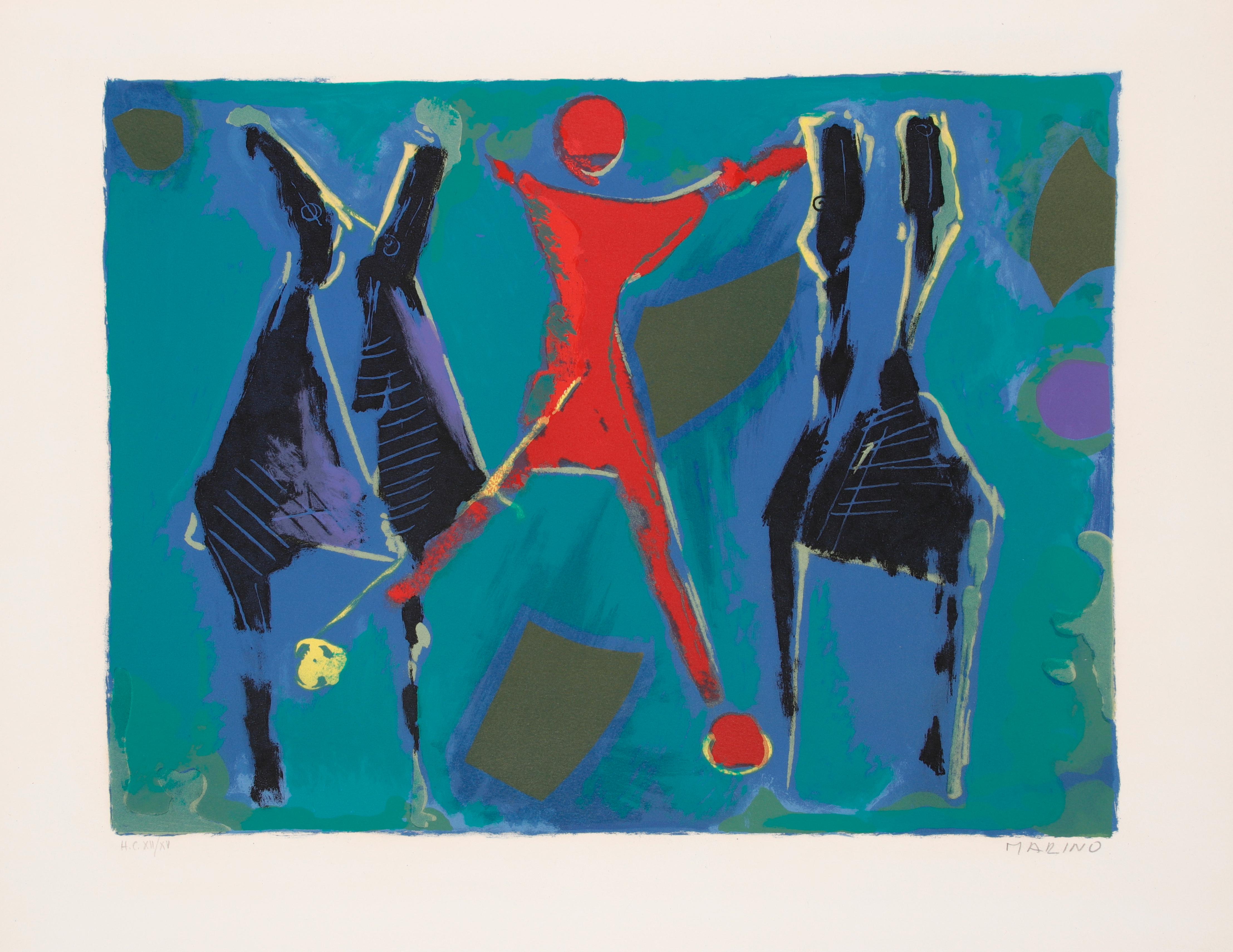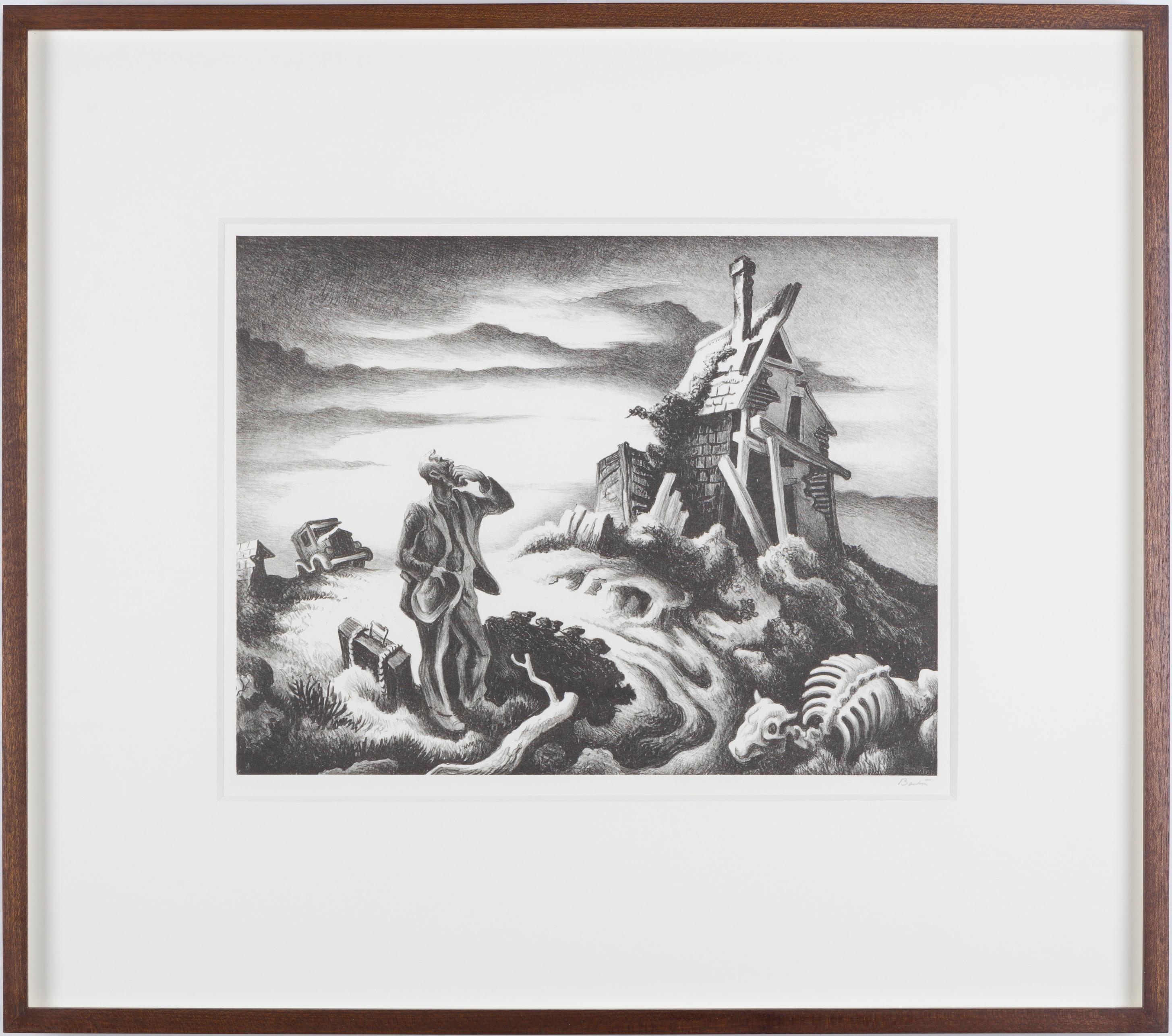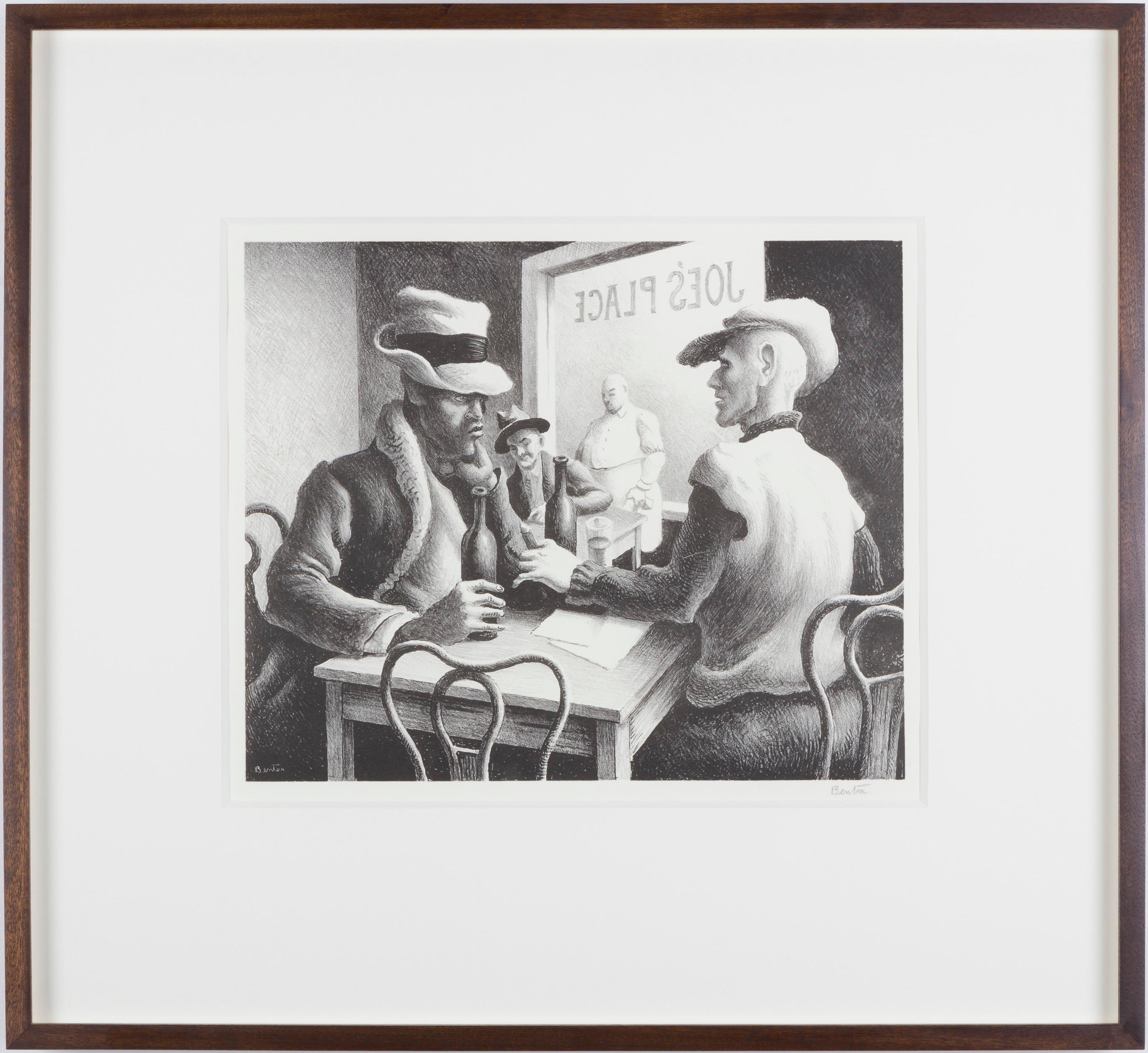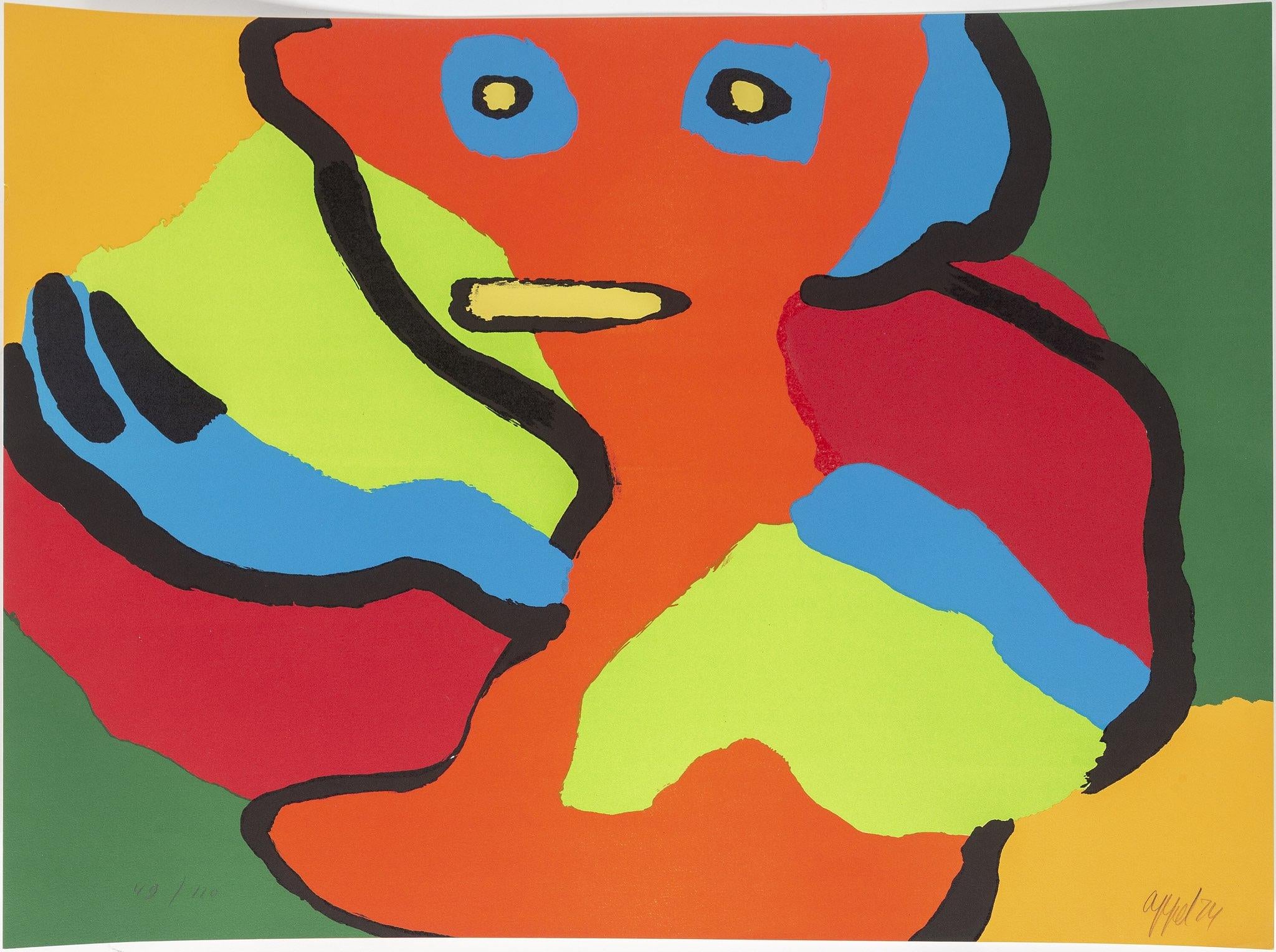Items Similar to Early Israeli Russian Artist Lithograph With Woman Bezalel
Want more images or videos?
Request additional images or videos from the seller
1 of 7
Miriam HadgadyaEarly Israeli Russian Artist Lithograph With Woman Bezalel1932
1932
About the Item
All but forgotten today, Had Gadya was the first woman to study at the Bezalel Art School and an outstanding painter in 1920s' Tel Aviv.
In 1912, she was 17 years old, the only female student at Bezalel. She had just come from Russia, and had been given the curious nickname "Had Gadya."
During her first year at Bezalel, the artist and teacher Shmuel Levy Ophel painted a wonderful portrait of Had Gadya, a girl-woman, in shades of dusky blue. Her expression was both innocent and arousing - her trademark.
In the 1920s, Had Gadya was the face of Bezalel. A kind of muse, a boyish nymph. She appears in a number of photographs by Yaakov Ben Dov, who documented life at Bezalel in the early years.
But Had Gadya was more than a pretty face. She was a talented painter, according to the chief curator of the Israel Museum, Yigal Zalmona.
In contrast, art historian Gideon Ofrat believes that her "spirit hovers over the complex and legendary beginnings of Bezalel and Boris Schatz and that is all."
Had Gadya's real name was Marousia (Miriam) Nissenholtz. She was born in Russia in 1895 in a small town called Kodama, near Odessa. Both her parents were pharmacists.
The most significant event in her life was without a doubt the Bezalel exhibition in Odessa. On Passover in 1911, Boris Schatz came to display works created at Bezalel and to enlist new students and funding for the institution, which was then barely surviving. It was still very cold when the big white tent went up in Alexander Park in the center of the city, according to sources of the period. Roman columns and a symbol of the Ten Commandments were placed at the front of the tent, and above the entrance a sign bore the word "Bezalel" in gilded letters. A "tapestry of the holy places" was unfurled, and nine crates containing the works of art were unloaded.
The excitement was great. Mendele Mocher Sforim was photographed with Schatz at the front of the tent. Later, inside, Schatz presented magic lantern pictures to an audience of hundreds. Marousia was also charmed.
There are conflicting versions as to how the name Had Gadya was born. Had Gadya (literally "an only kid" - the name of a popular seder song) was a common symbol at Bezalel, and the subject of illustrations by Zeev Raban. Nachum Gutman and others described their classmate as mischievous, skipping around like a goat on the mountains. In her autobiographical manuscript, Had Gadya says she invented the name for herself, as she felt like a young goat among wolves because the boys harassed her.
For some reason this venture did not last. Like other women painters - Ziona Tajar, and later Aviva Uri and Lea Nikel, who was a good friend of Had Gadya - Had Gadya decided to pursue her art abroad. In 1921 she decided to leave her daughter, then three, and travel to Europe. Not to the art capital of Paris, but to Vienna, where among other things she studied batik, which was to become a main source of her livelihood.
Ofrat argues that Tajar, who went to Paris as soon as she completed her studies, brought back Modernism, and any one who did not do the same was doomed to oblivion at that time. Zalmona adds that Tajar struggled to get where she was professionally, but also had the right connections with gallery owners and art critics, while Had Gadya had no one to depend on. "Schatz could no longer help her because the art scene and the power centers had moved to Tel Aviv," he says.
Carmela Rubin, director of the Reuven Rubin Museum in Tel Aviv, says that Had Gadya's story cannot be divorced from the issue of the status of women artists in those years. Rubin, the daughter-in-law of the famed painter, researched the history of other struggling women artists from that period, like Yonah Shechter Zaliuk and Mussia Bograshov.
"In the 1920s, these painters, who were good painters, exhibited in major shows at Haohel Theater. But the moment they got married, they became invisible," Rubin says. "This was not only because family life and the life of a woman artist could not be combined, but because no one paid attention to them. All of them, including Tajar, Lea Nikel and Aviva Uri, paid a heavy price for their career at a time when women were not expected to stand out. They were expected to stay home. They left their children and devoted themselves to art, but a little later than Had Gadya did."
In the 1950s, she got married for the third time, to a penniless illustrator of children's books. She left him a few years later and returned to Israel, first living in Ein Karem in Jerusalem, and then moving to the artists' quarter in Safed, where she became friends with artists Lea Nikel and Hava Levy. In her latter years, she lived with her elder daughter in Tel Aviv, Shulamit Abulafia Cifroni (who died this year).
In the 1970s, in Safed, Had Gadya began painting large abstracts, full of color and squares. In one, beyond the geometric patterns, as if behind a transparent curtain, a woman can be seen holding a baby, reminiscent of the Madonna and child. "She felt she was being liberated and reaching her destination as an artist," Joelson says.
- Creator:Miriam Hadgadya (1895 - 1982, Israeli)
- Creation Year:1932
- Dimensions:Height: 11 in (27.94 cm)Width: 7.75 in (19.69 cm)
- Medium:
- Movement & Style:
- Period:
- Condition:some minor toning stains and wear. Please see photos.
- Gallery Location:Surfside, FL
- Reference Number:1stDibs: LU3826615152
About the Seller
4.9
Platinum Seller
These expertly vetted sellers are 1stDibs' most experienced sellers and are rated highest by our customers.
Established in 1995
1stDibs seller since 2014
1,550 sales on 1stDibs
Typical response time: 1 hour
- ShippingRetrieving quote...Ships From: Surfside, FL
- Return PolicyA return for this item may be initiated within 3 days of delivery.
More From This SellerView All
- French Armenian Jean Jansem Lithograph Mod Woman in Orange Hand Signed ModernistBy Jean JansemLocated in Surfside, FLHand signed in pencil and numbered from the limited original edition. Jean Jansem (Hovhannes Semerdjian) 1920-2013 Bursa, Ottoman Turkish Empire Hovhannes "Jean" Semerdjian (Armenian: Հովհաննես "Ժանսեմ" Միրիջանի Սեմերջյան, 9 March 1920 – 27 August 2013), also known as Jean Jansem, was a French-Armenian painter. Jansem's artworks are internationally known, and are part of museum collections throughout France, Japan and the United States. A Foreign member of the National Academy of Sciences of Armenia (2002). He was awarded by the Ordre des Arts et des Lettres in 1953 and by the Knight of the French Legion of Honour in 2003. The President of Armenia awarded Jansem a Medal of Honor for his “reinforcement of Armenian-French cultural ties.” Hovhannes Semerdjian was born in 1920 in Bursa, then in the Ottoman Empire. In 1922, his family fled to Greece. He spent his childhood in Thessaloniki. They arrived to Issy-les-Moulineaux suburb of Paris, France in 1931 when he was 11 and that is when he begin to paint. The first professional schools for Jansem became the academies of Montparnasse (1934–1936). He studied in the Ecole des Arts Decoratifs. His teachers were Maurice Brianchon, Raymond Legueult and Roland Oudot. Jansem also studied at the Sabatie studio for a year. Early paintings by Jansem were mainly on national issues. Known for his washy representational paintings of figure, landscape, marine and genre scenes of European subjects: fishermen and children of Greece, bullfighting in Spain, Italian landscapes and markets, scenes of Venice and French France village marketplaces and landscapes, nude women, still lifes, and figures, Jansem painted with a variety of media that included gouache, watercolor, ink, and oil painting in a stylized and textural aesthetic. had individual exhibitions in Paris, New York, Chicago, London, Tokyo, Rome, Brussels, Lausanne, Beirut etc. His work was shown by the prominent Wally Findlay Galleries in New York, Paris, Palm Beach and Beverly Hills (they show many important artists including Gaston Sebire, Henri Maik, Gen Paul, Jean Pierre Cassigneul, Jean Dufy, Gustavo Novoa, Nicola Simbari, Dietz Edzard, Suzanne Eisendieck, Constantin Kluge, Louis Valtat, Michael Vollbracht...Category
1960s Modern Figurative Prints
MaterialsLithograph
- Georges Braque Bouquet de Fleurs Lithograph Bold Blue Hand Signed Ltd Ed PrintBy Georges BraqueLocated in Surfside, FLGeorges Braque (French, 1882-1963) Bouquet de Fleurs Lithograph in colors, 1957. Published by Maeght, printed by Mourlot, Paris, France Numbered 166/300 and hand signed in pencil. ...Category
20th Century Modern Figurative Prints
MaterialsLithograph
- 1936 Lithograph Interregnum, Cigar, Kid w Toy Gun, Small Edition Weimar GermanyBy George GroszLocated in Surfside, FLHand lithography on BFK Rives French hand moulded paper Style: German New Objectivity (Neue Sachlichkeit) According to the frontis these were produced by Hand Lithography. According...Category
1930s Modern Interior Prints
MaterialsLithograph
- 1936 Lithograph Interregnum Portfolio Butcher Shop Small Edition Weimar GermanyBy George GroszLocated in Surfside, FLHand lithography on BFK Rives French hand moulded paper Style: German New Objectivity (Neue Sachlichkeit) According to the frontis these were produced by Hand Lithography. According...Category
1930s Modern Interior Prints
MaterialsLithograph
- 1936 Lithograph Interregnum portfolio Artist Studio small edition Weimar GermanyBy George GroszLocated in Surfside, FLHand lithography on BFK Rives French hand moulded paper Style: German New Objectivity (Neue Sachlichkeit) According to the frontis these were produced by Hand Lithography. According...Category
1930s Modern Interior Prints
MaterialsLithograph
- 1936 Lithograph Interregnum Street Riot Protest Small Edition Weimar GermanyBy George GroszLocated in Surfside, FLHand lithography on BFK Rives French hand moulded paper Style: German New Objectivity (Neue Sachlichkeit) According to the frontis these were produced by Hand Lithography. According...Category
1930s Modern Interior Prints
MaterialsLithograph
You May Also Like
- From Color to Form VIIBy Marino MariniLocated in ZEIST, UTMarino Marini- From Color to Form VII Color lithograph on Arches paper (with watermark), 1969. Printed by Mourlot, Paris, published by Société Internationale d'Art XXe Siècle, Paris,...Category
1960s Modern Figurative Prints
MaterialsLithograph
- From Color to Form VIIIBy Marino MariniLocated in ZEIST, UTMarino Marini- From Color to Form VIII Color lithograph on Arches paper (with watermark), 1969. Printed by Mourlot, Paris, published by Société Internationale d'Art XXe Siècle, Par...Category
1960s Modern Figurative Prints
MaterialsLithograph
- Prodigal SonBy Thomas Hart BentonLocated in London, GBA fine impression with full margins published by Associated American Artists with their information label present - pictured in Art and Popular Religion in Evangelical America, 1815-...Category
1930s American Modern Landscape Prints
MaterialsLithograph
- DiscussionBy Thomas Hart BentonLocated in London, GBA fine impression with large full margins published by Associated American Artists.Category
1930s American Modern Figurative Prints
MaterialsLithograph
- Some People TogetherBy Karel AppelLocated in New York, NYSome People Together, 1974 Hand-signed and dated in pencil Color lithograph and screenprint Sheet 22 x 29 3/4 inches; 559 x 756 mm. Edition 110Category
1970s Modern Abstract Prints
MaterialsLithograph, Screen
- Le Reve de ParisBy Marc ChagallLocated in New York, NYMarc Chagall Le Rêve de Paris (Paris Dream), 1969-70 Color lithograph on Arches wove paper 35 3/8 in x 25 1/4 in (90 cm x 64 cm) 40 1/8 in x 28 1/8 in (101.8 cm x 71.5 cm) Numbered f...Category
1960s Modern Figurative Prints
MaterialsLithograph
Recently Viewed
View AllMore Ways To Browse
Russian Art Books
Russian Childrens
Woman Charm
Vintage Illustrations Woman
Vintage Illustration Woman
Early Large Tapestry
Russian Gilded
Russian 17 Century
Tapestry Russia
Tapestry Woman
Gilded Lantern
20th Century Manuscripts
Curtain Long
Lantern Shades
Vintage Travel Charms
Vintage Travel Charm
Rubin Reuvens
Vintage Lea



